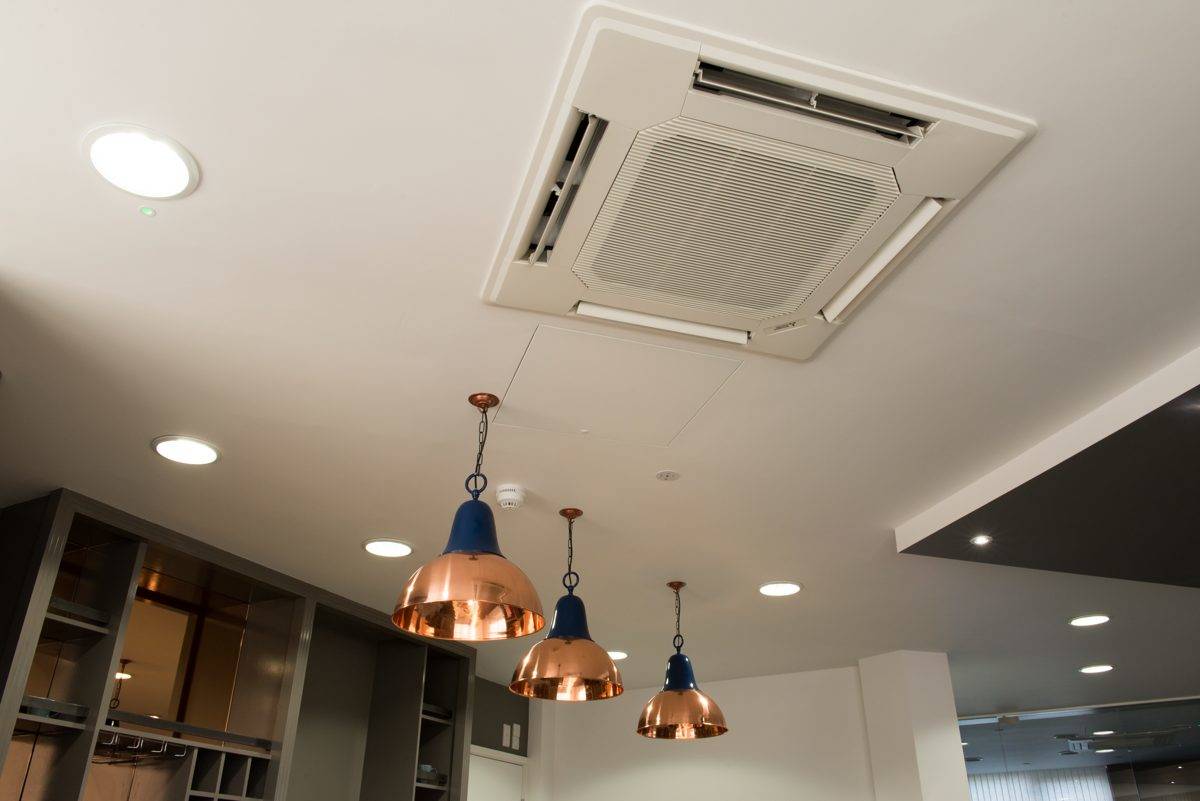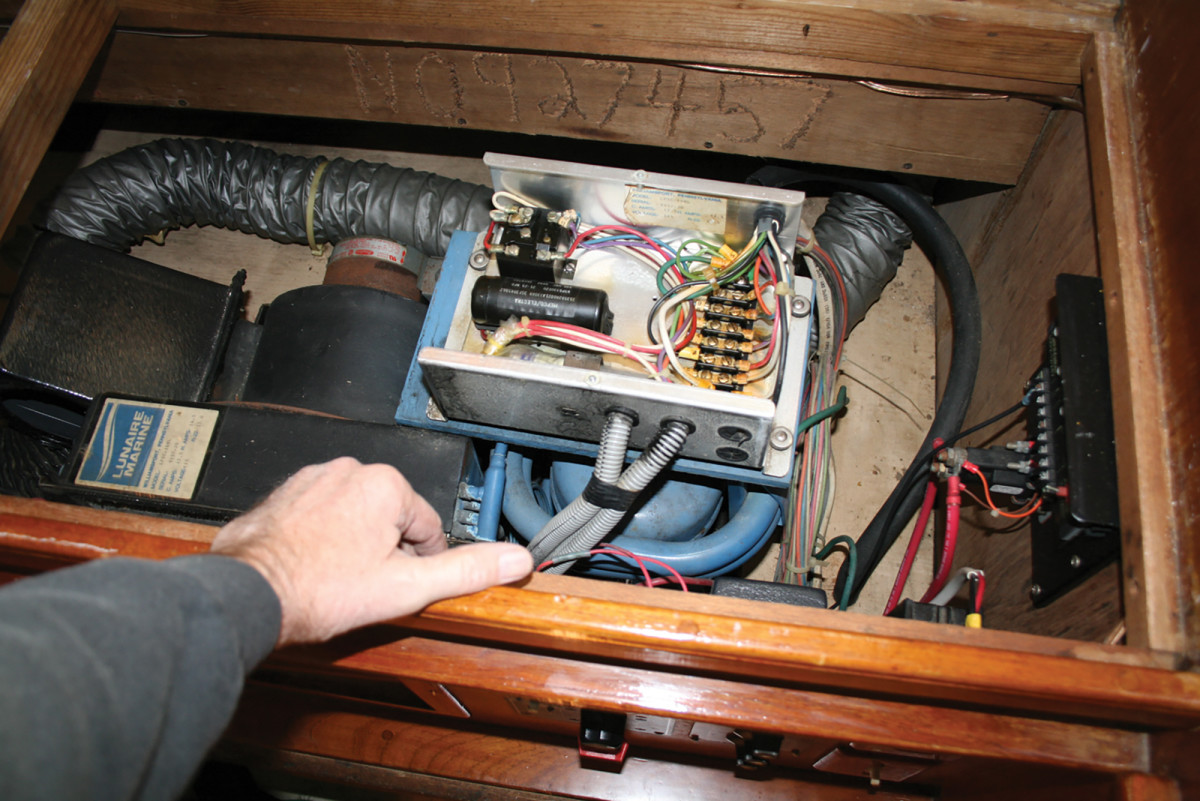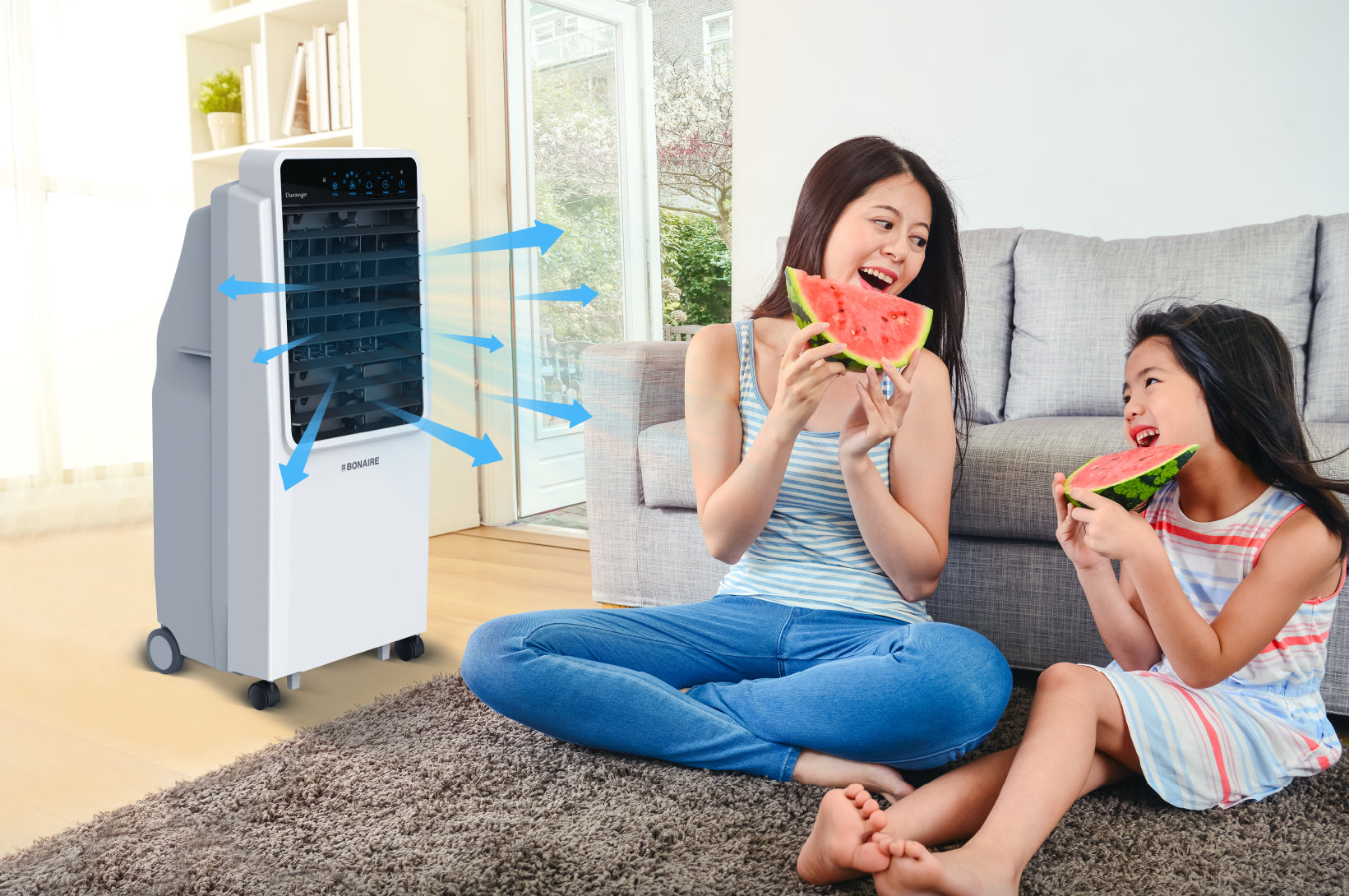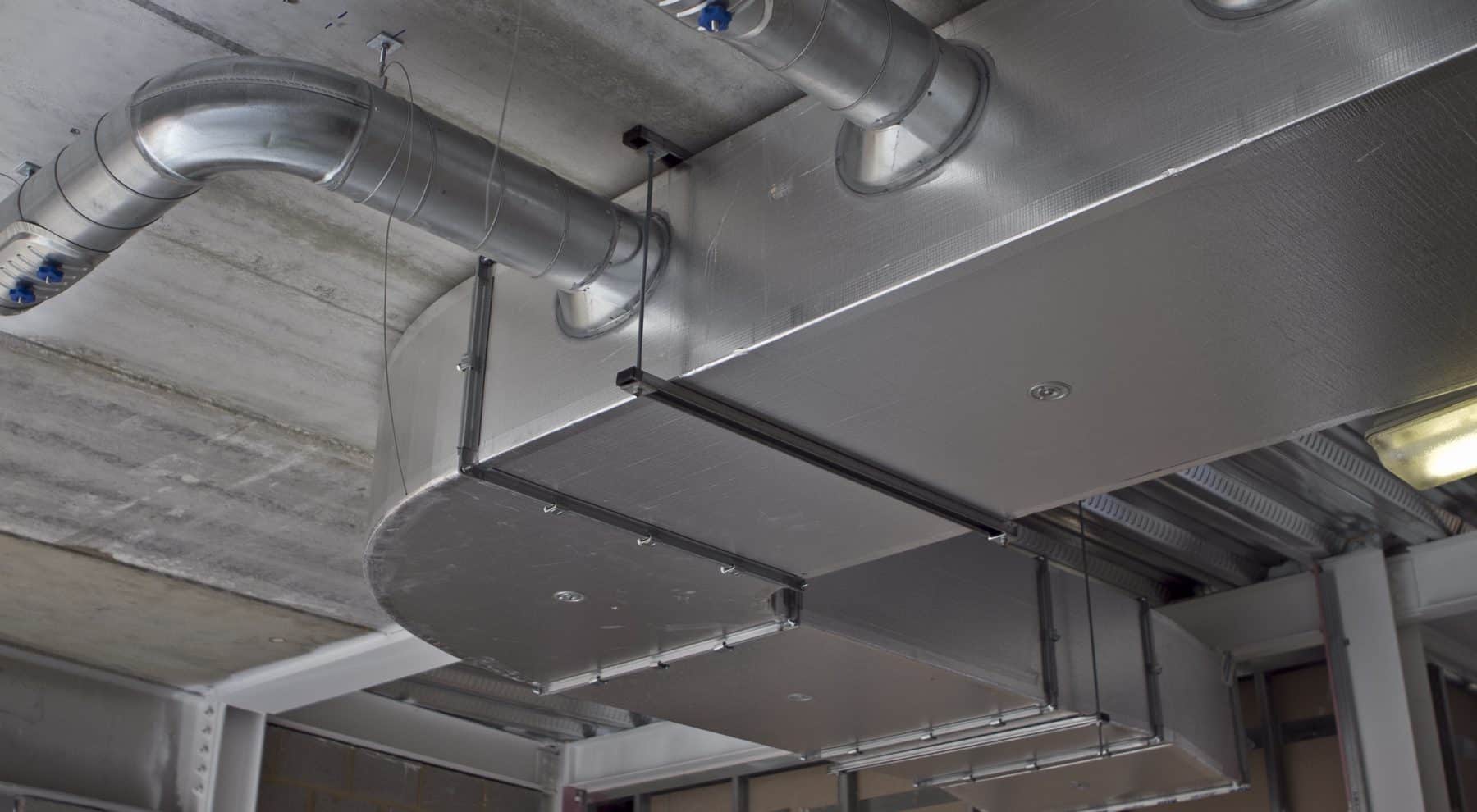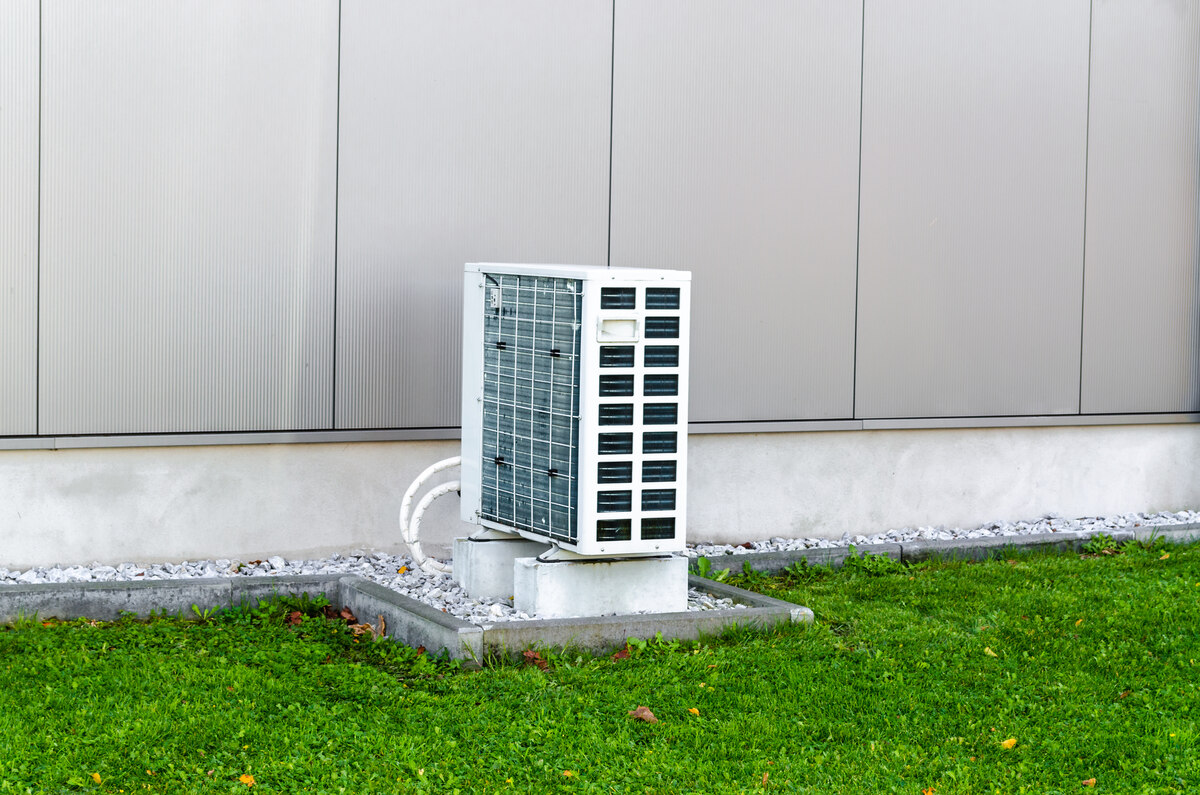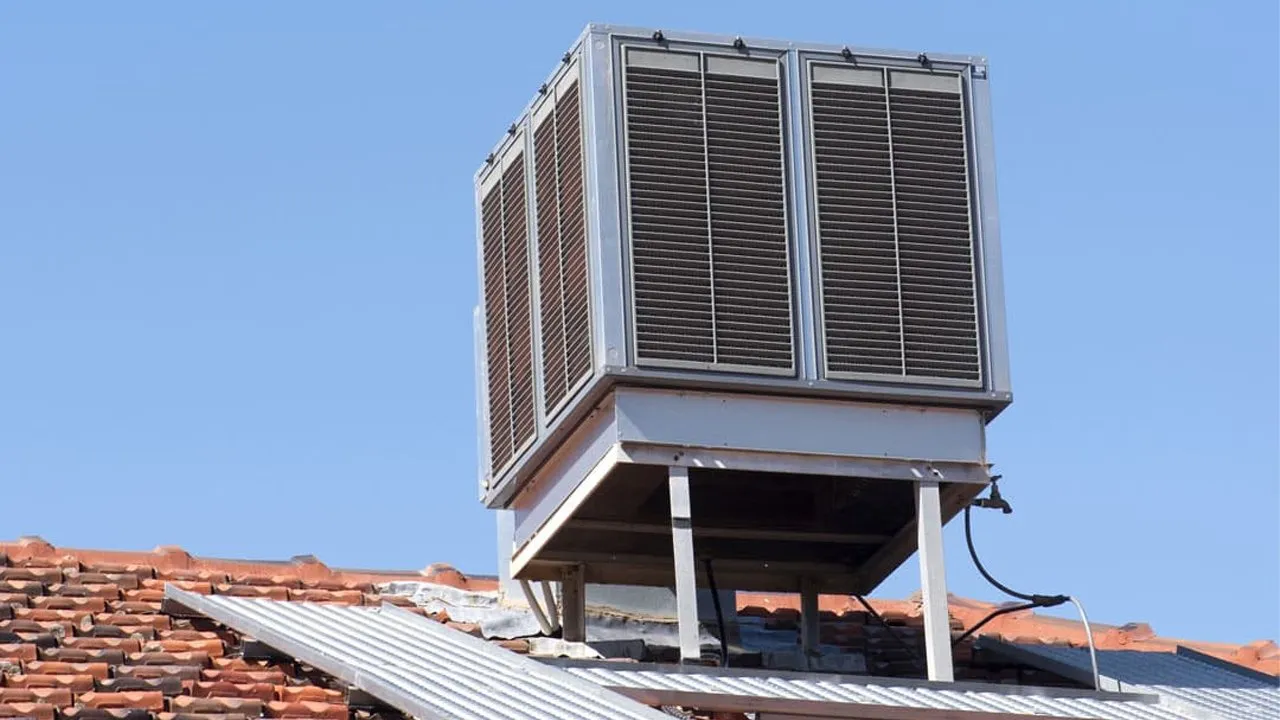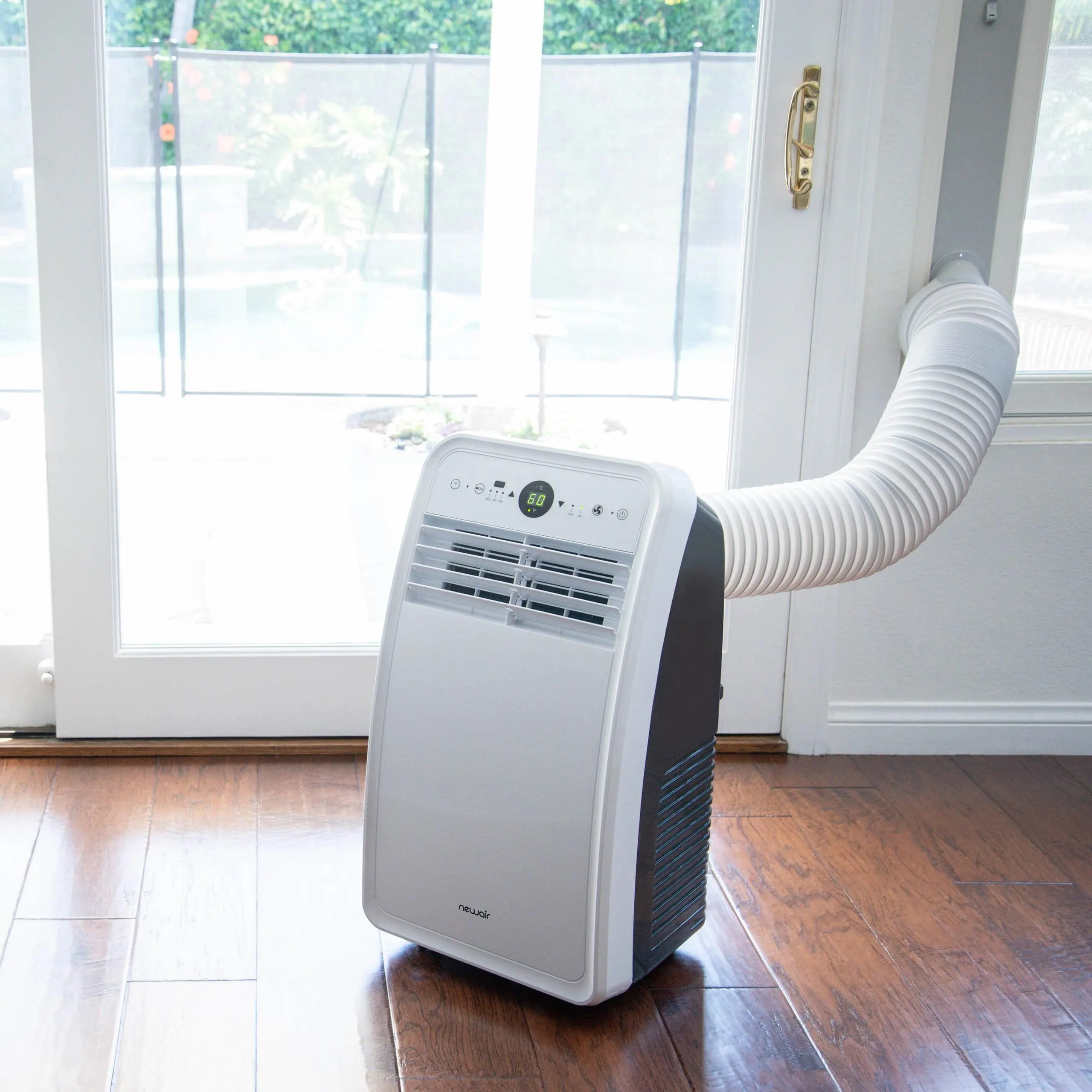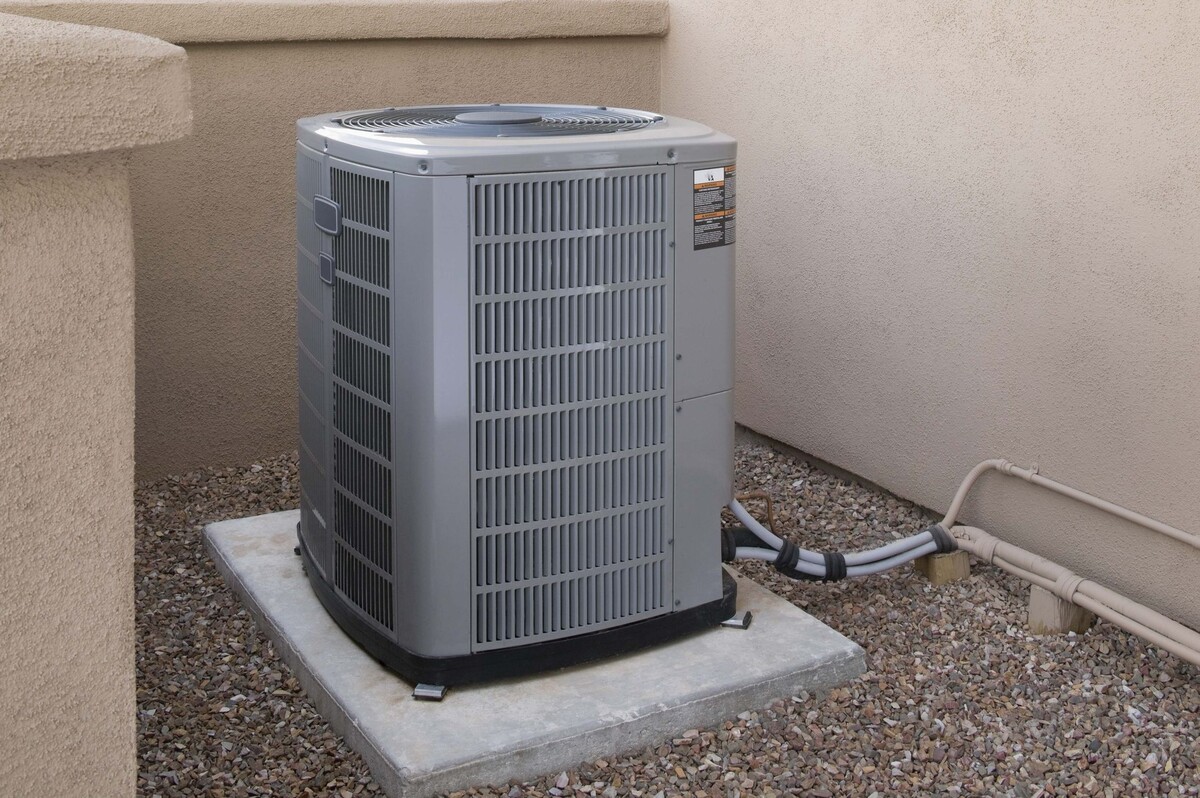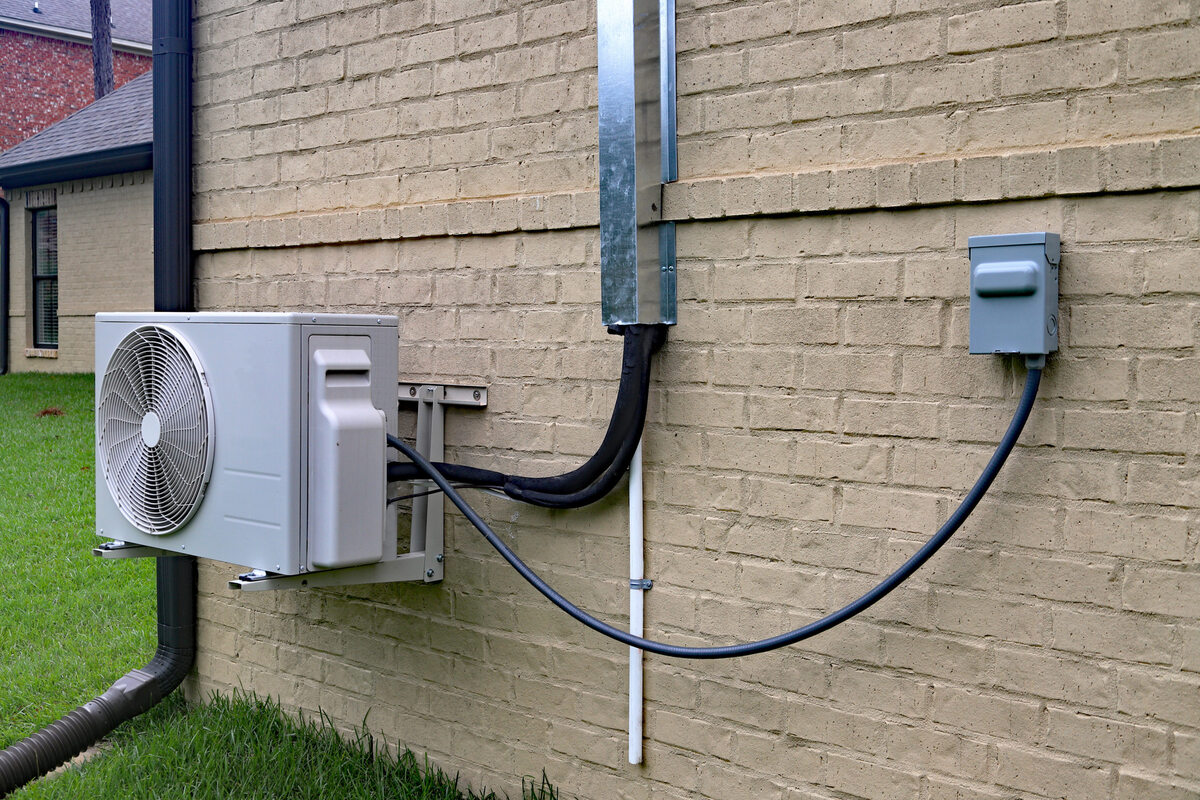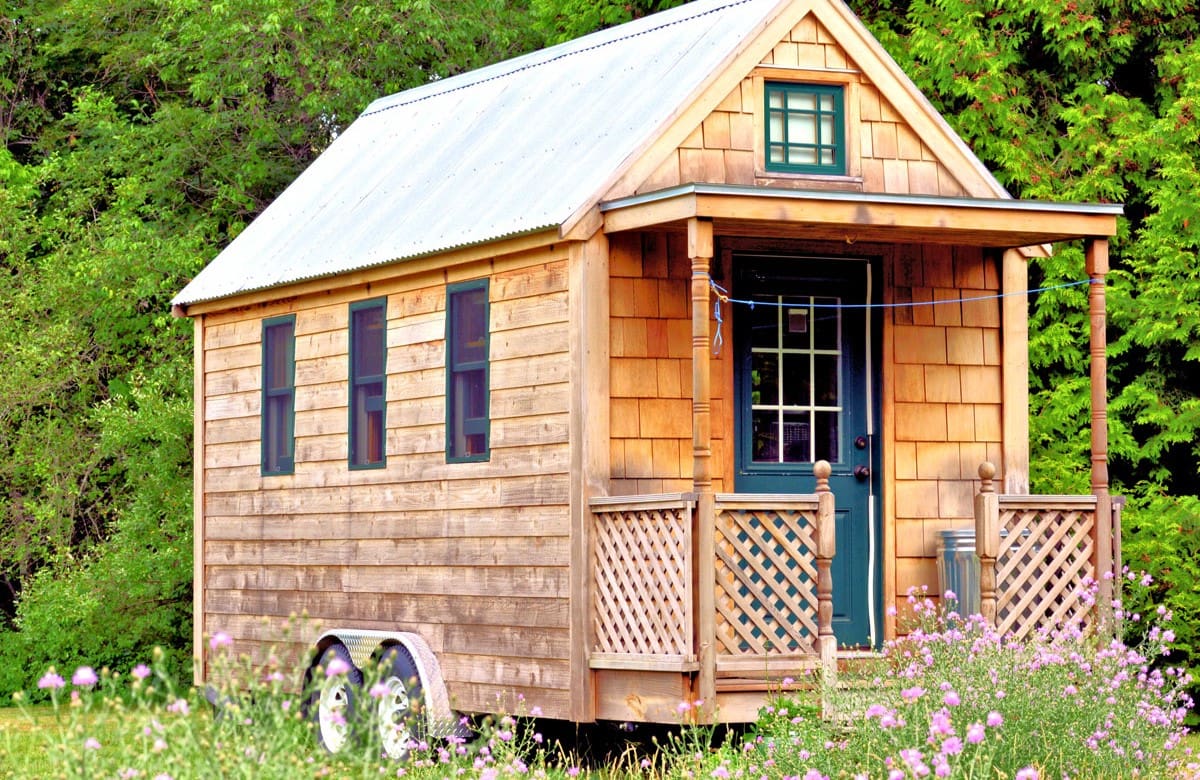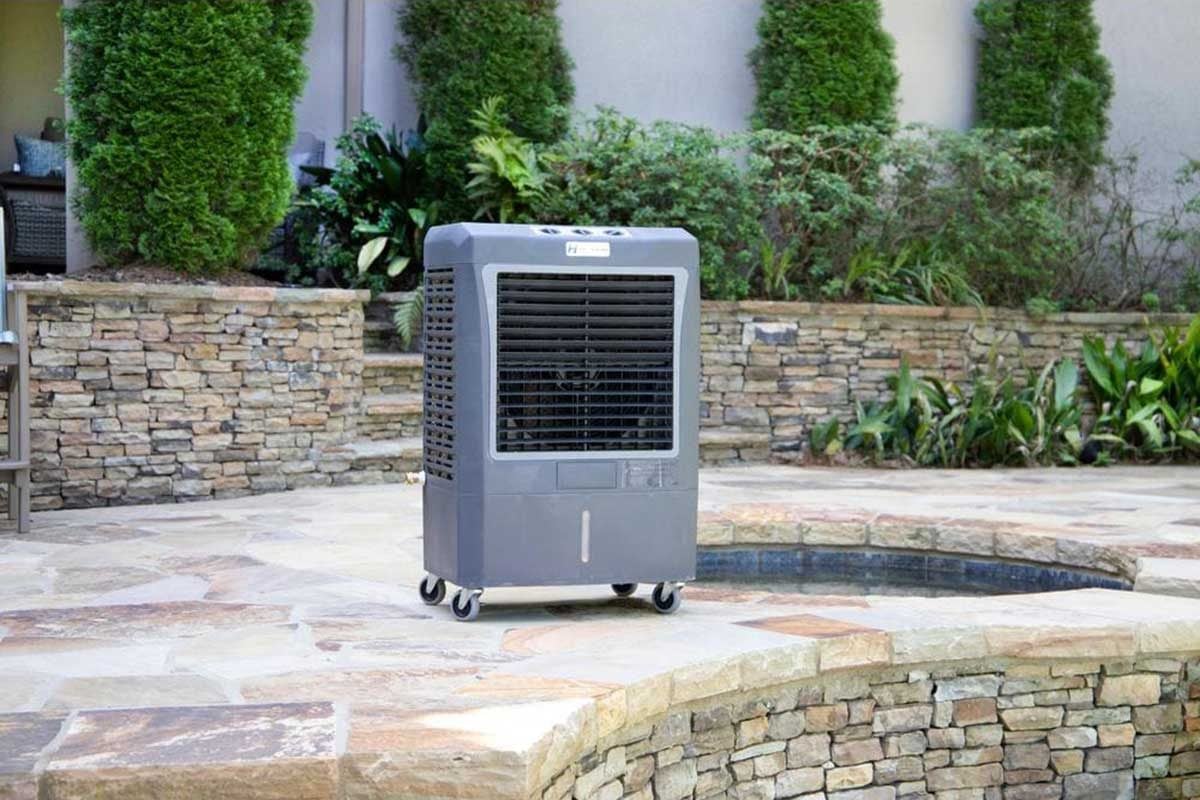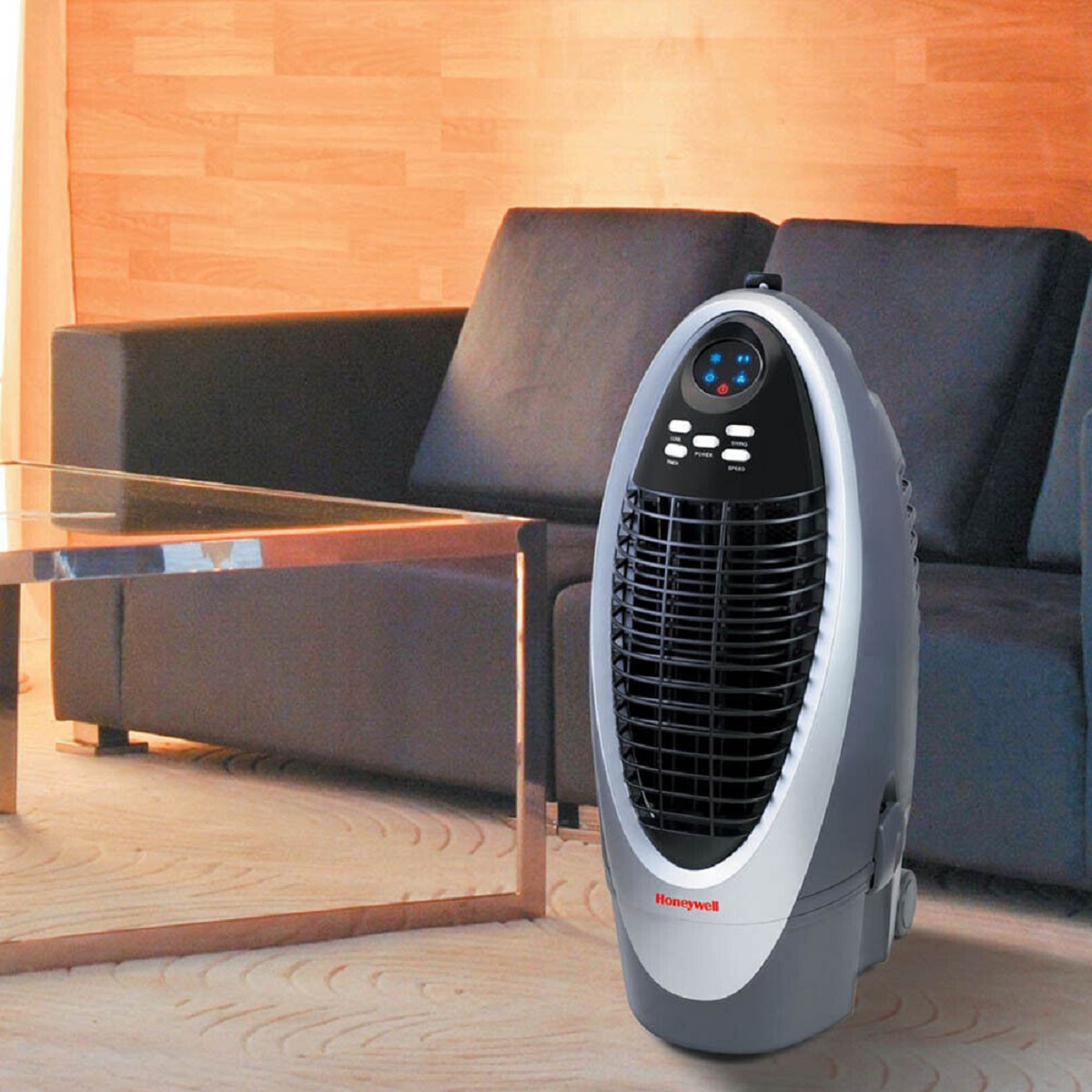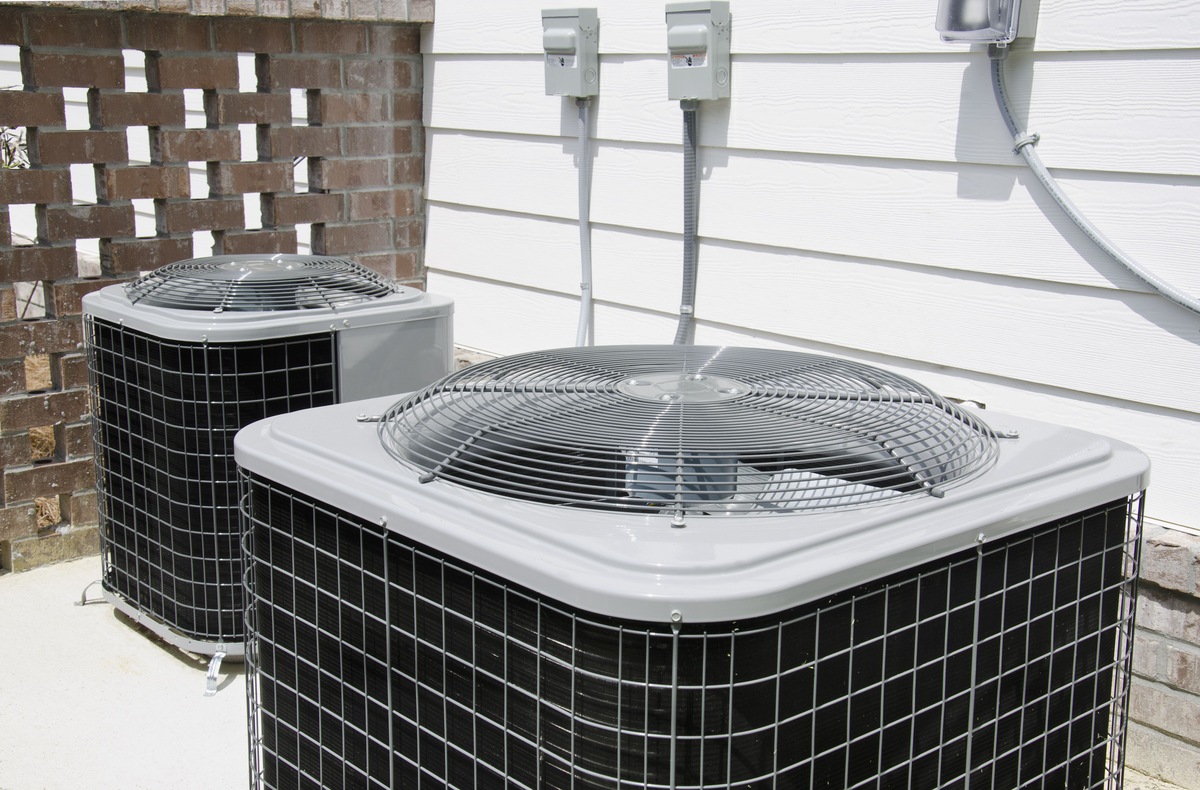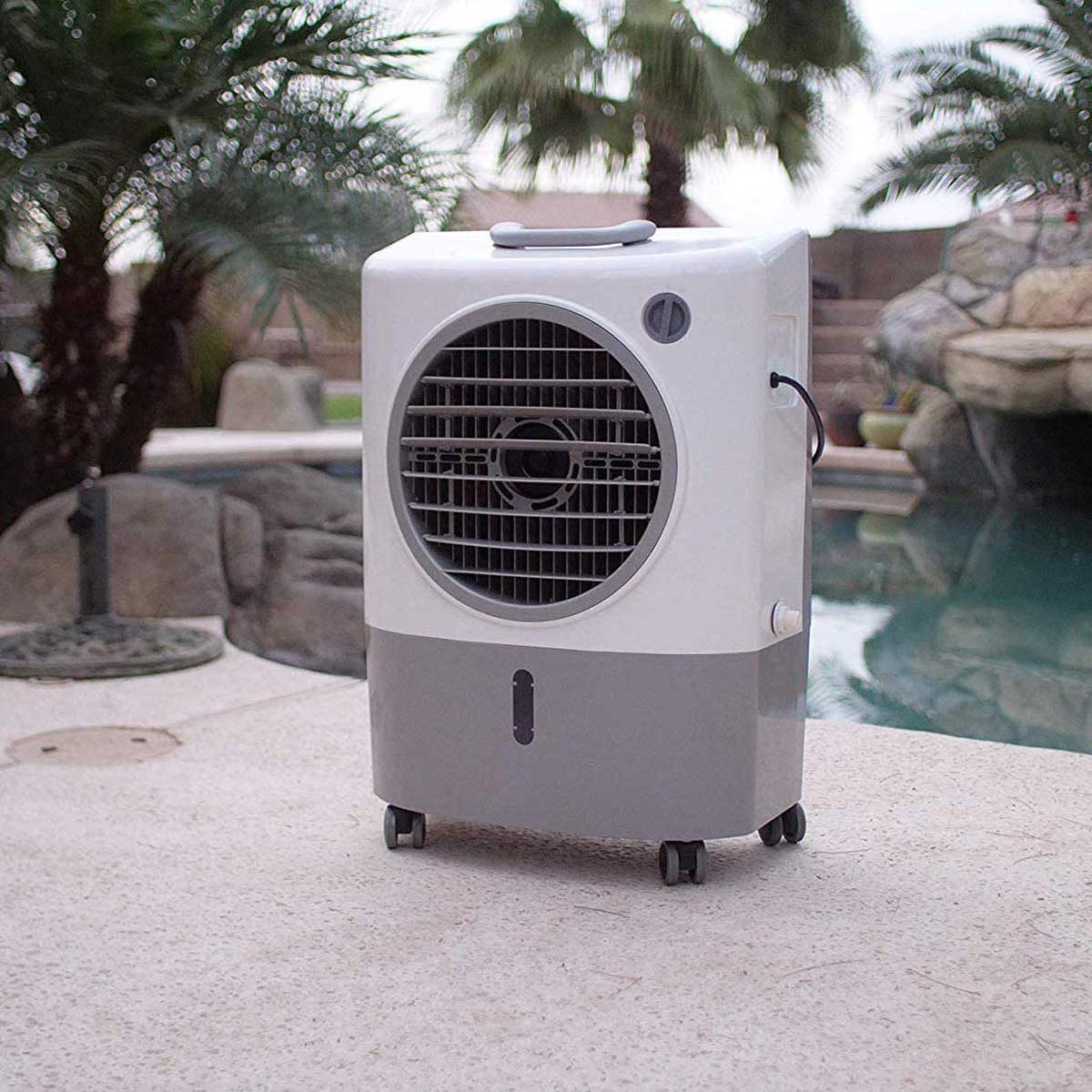Home>Home Maintenance>How Evaporative Air Conditioning Works
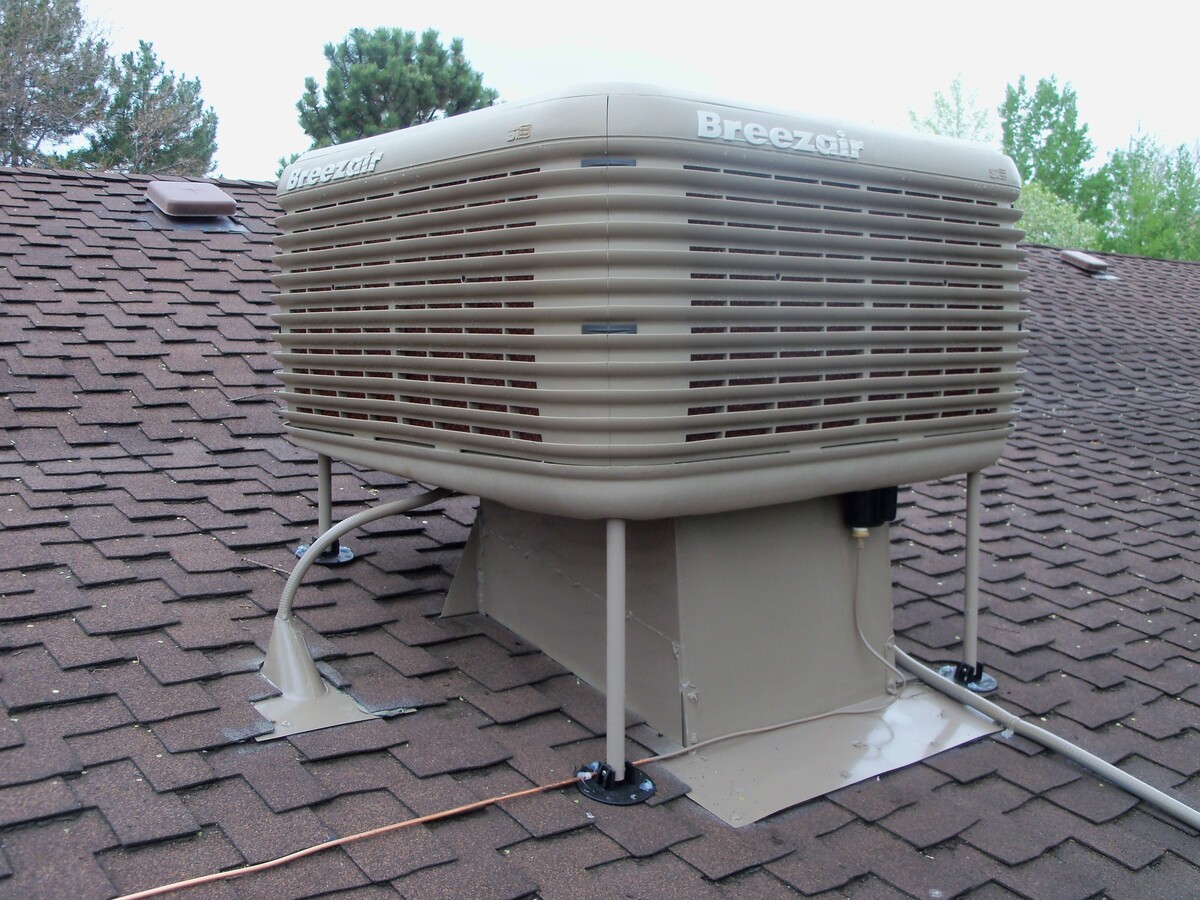

Home Maintenance
How Evaporative Air Conditioning Works
Modified: March 6, 2024
Learn how evaporative air conditioning works and why it is an essential part of home maintenance. Keep your home cool and comfortable with this efficient cooling system.
(Many of the links in this article redirect to a specific reviewed product. Your purchase of these products through affiliate links helps to generate commission for Storables.com, at no extra cost. Learn more)
Introduction
Welcome to the world of evaporative air conditioning! If you’re looking for a cost-effective and eco-friendly way to keep your home cool during those sweltering summer months, then you’ve come to the right place. In this article, we’ll explore the inner workings of evaporative air conditioning, also known as swamp coolers, and discover why they are gaining popularity as an alternative to traditional air conditioners.
Evaporative air conditioning harnesses the power of evaporation to cool the air. Unlike conventional air conditioners that rely on refrigeration, evaporative coolers use a simple but effective process to create a cool and comfortable indoor environment. By understanding the principles behind evaporative cooling and the components involved, you’ll gain a deeper appreciation for this innovative technology and how it can benefit your home.
Throughout this article, we’ll delve into the various components of an evaporative cooler, the process of evaporative cooling, as well as the advantages and limitations of this cooling method. We’ll also provide some valuable tips on how to properly maintain and care for your evaporative cooler to ensure optimal performance and longevity.
So, if you’re ready to learn all about evaporative air conditioning and how it can transform your home into a cool oasis, let’s dive in!
Key Takeaways:
- Evaporative air conditioning uses evaporation to cool air, making it energy-efficient and eco-friendly. It’s great for dry climates but less effective in high humidity areas.
- Regular maintenance, proper positioning, and monitoring humidity levels are essential for maximizing the effectiveness of evaporative coolers. Embrace the power of evaporation for a refreshingly cool home!
Read more: How Vehicle Air Conditioning Works
Principle of Evaporative Air Conditioning
The principle behind evaporative air conditioning is based on the fact that when water evaporates, it absorbs heat from its surroundings. Evaporative coolers use this natural process to cool the air, making them an energy-efficient and sustainable alternative to traditional air conditioners.
To understand the principle of evaporative air conditioning, imagine stepping out of a swimming pool on a hot summer day. As the water evaporates from your skin, you feel a cooling sensation. This is because the heat energy from your body is transferred to the water molecules, causing them to evaporate and carry away the heat.
In an evaporative cooler, the process is similar. It consists of a fan and a moistened pad or filter. The fan draws warm, dry air from the outside and passes it through the wet pad. As the air passes through the pad, it comes into contact with the water molecules, causing evaporation to occur.
As the water evaporates, it absorbs heat from the air, effectively lowering its temperature. The now cooled air is then blown into the living space, providing a refreshing and comfortable environment. The warm, dry air that entered the cooler is expelled outside, completing the cycle.
This process of evaporation and heat absorption is highly effective in dry climates where the air is hot and humidity levels are low. It works by increasing the moisture content in the air while simultaneously lowering the temperature.
By understanding the principle behind evaporative air conditioning, you can see how it differs from refrigeration-based air conditioning. While traditional air conditioners use energy-intensive compressors and refrigerants to cool the air, evaporative coolers rely on the natural process of evaporation. This makes them an energy-efficient and environmentally friendly cooling solution.
Now that we understand the principle of evaporative air conditioning, let’s take a closer look at the components that make up an evaporative cooler.
Components of an Evaporative Cooler
Evaporative coolers consist of several key components that work together to provide efficient cooling. Understanding these components will give you a better grasp of how the system operates and allow you to troubleshoot any issues that may arise. Let’s explore the primary components of an evaporative cooler:
- Water Reservoir: This is where the water is stored in the cooler. It is essential to keep the reservoir filled to the recommended level for optimal performance.
- Pump: The pump is responsible for circulating water from the reservoir to the cooling pads. It plays a crucial role in maintaining a constant flow of water for efficient evaporation.
- Cooling Pads: These are typically made of a porous material, such as cellulose, that retains water. The pads are placed in front of the air intake, and the water from the reservoir saturates them. The warm air from the outside is forced through the damp pads, where evaporation occurs, cooling the air in the process.
- Blower or Fan: The blower or fan is responsible for drawing warm, dry air from the outside and blowing it through the cooling pads. This creates a flow of cooled air that is distributed throughout the room or house.
- Exhaust Vent or Louvers: The exhaust vent or louvers are located on the opposite side of the cooler from the air intake. They allow the warm, moisture-laden air to be expelled outside, preventing it from recirculating into the living space.
- Control Panel: The control panel is typically located on the front or side of the cooler and allows you to adjust settings such as fan speed, pump operation, and timer functions.
These are the primary components found in most evaporative coolers. However, some models may include additional features, such as remote controls, digital displays, or built-in timers, to enhance convenience and control.
Now that we understand the components of an evaporative cooler, let’s explore the process of evaporative cooling in more detail.
Process of Evaporative Cooling
The process of evaporative cooling in an evaporative cooler involves several steps that work together to lower the temperature of the air. Understanding this process will give you a clear picture of how the cooler functions and how it provides cool and refreshing air. Let’s explore the process of evaporative cooling:
- Water Saturation: The first step in the process is to saturate the cooling pads with water. The water reservoir in the cooler is filled, and the pump circulates the water onto the pads. This ensures that the pads are moistened and ready for the evaporation process.
- Air Intake: The blower or fan in the evaporative cooler draws warm, dry air from the outside into the unit. This air is typically filtered before entering the cooler to remove dust and other impurities.
- Air Passing Through Cooling Pads: As the warm air enters the cooler, it passes through the moist cooling pads. The water on the pads evaporates, absorbing heat from the air. This heat transfer process causes the temperature of the air to drop.
- Cooled Air Distribution: The now cooled air is blown out of the cooler by the blower or fan and into the living space. The cool air helps to lower the indoor temperature, providing relief from the heat.
- Exhaust of Warm Air: The warm, moisture-laden air that has passed through the cooling pads is expelled outside through the exhaust vent or louvers. This prevents the recirculation of warm air and helps maintain a continuous flow of cool, fresh air.
The process of evaporative cooling is ongoing as long as the evaporative cooler is running. The constant circulation of air through the wet cooling pads facilitates the evaporation and cooling process, making the cooler an effective cooling solution in dry climates.
It’s important to note that evaporative cooling is most effective in areas with low humidity. The evaporation process requires dry air to maximize cooling efficiency. If the humidity levels are high, the air may already contain a significant amount of moisture, reducing the cooling effect.
Now that we have explored the process of evaporative cooling, let’s highlight some of the advantages that make evaporative air conditioning a popular choice for homeowners.
Advantages of Evaporative Air Conditioning
Evaporative air conditioning offers a range of advantages that make it an attractive cooling solution for homeowners. From its energy efficiency to its ability to provide fresh and humidified air, let’s explore the key advantages of evaporative air conditioning:
- Energy Efficiency: Evaporative coolers consume much less energy compared to traditional air conditioners. They do not require compressors or refrigerants, resulting in lower energy consumption and reduced utility bills.
- Eco-Friendly: Evaporative cooling relies on natural processes and doesn’t emit harmful gases or chemicals. It has a minimal impact on the environment and contributes to a greener and more sustainable home cooling solution.
- Low Installation and Maintenance Costs: Evaporative coolers are generally more affordable to purchase and install compared to traditional air conditioning systems. They have fewer complex components, reducing the chances of costly repairs.
- Improves Indoor Air Quality: Evaporative air conditioning introduces fresh air into the living space, unlike traditional air conditioners that recirculate the same air. This continuous exchange of air helps to improve indoor air quality, reducing the presence of allergens and pollutants.
- Natural Humidification: Evaporative cooling increases the moisture content in the air, which is an advantage in dry climates. It can alleviate symptoms associated with dry air, such as dry skin, irritated eyes, and respiratory discomfort.
- Easy Maintenance: Maintaining an evaporative cooler is relatively simple. Regular cleaning of the cooling pads and ensuring the water reservoir is clean and free from debris is usually all that’s required to keep the cooler in good working condition.
- No Ozone Depletion: Evaporative cooling systems do not contribute to the depletion of the ozone layer. They do not use refrigerants that contain harmful CFCs (chlorofluorocarbons) or HCFCs (hydrochlorofluorocarbons).
These advantages make evaporative air conditioning a popular choice, especially in dry and arid regions. The combination of energy efficiency, eco-friendliness, improved indoor air quality, and cost-effectiveness makes it an attractive option for homeowners seeking an alternative to traditional air conditioning.
Despite its many advantages, evaporative air conditioning does have some limitations. Let’s explore these limitations to gain a comprehensive understanding of the technology.
When using evaporative air conditioning, make sure to keep the windows and doors open to allow for proper air circulation and maximize the cooling effect.
Read more: How Vrv Air Conditioning Works
Limitations of Evaporative Air Conditioning
While evaporative air conditioning offers several benefits, it is important to be aware of its limitations. Understanding these limitations will help you make an informed decision about whether evaporative cooling is suitable for your specific needs. Let’s explore the key limitations of evaporative air conditioning:
- Dependent on Dry Climate: Evaporative cooling relies on the evaporation of water into the air. Therefore, it is most effective in dry climates with low humidity levels. In areas with high humidity, the air may already be saturated with moisture, reducing the cooling effect of the evaporative cooler.
- Cooling Efficiency Sensitive to External Factors: The performance of an evaporative cooler can be affected by external factors such as ambient temperature and air quality. High temperatures, excessive dust or pollutants in the air, and strong winds can all impact the cooling efficiency of the unit.
- Requires Regular Water Supply: Evaporative coolers rely on a continuous water supply for optimal operation. In areas with water scarcity or high water costs, this can be a limitation. Additionally, the water supply should be clean and free from impurities to prevent clogging of the cooling pads or damage to the pump.
- Not Suitable for Closed Spaces: Evaporative cooling works by introducing fresh air from the outside into the living space. As a result, it is not ideal for tightly sealed or closed spaces where the cool air cannot circulate effectively. It is most effective when windows or vents are open to allow proper air exchange.
- No Temperature Control: Unlike traditional air conditioners, evaporative coolers do not have temperature control features. The cooling effect is dependent on the evaporation process and the outside air temperature. While you can adjust the fan speed, the cooling capability is limited to the conditions of the external environment.
- Maintenance of Cooling Pads: The cooling pads in an evaporative cooler require regular maintenance. They need to be cleaned, replaced, or treated to prevent the growth of bacteria or mold. Neglecting proper maintenance can lead to reduced cooling efficiency and potential health hazards.
Despite these limitations, evaporative air conditioning remains a viable and beneficial cooling option in suitable climates and conditions. By understanding these limitations, you can determine whether evaporative cooling is the right choice for your home and make an informed decision.
Now that we’ve explored both the advantages and limitations of evaporative air conditioning, let’s dive into the importance of maintenance and care for your evaporative cooler.
Maintenance and Care of Evaporative Coolers
Maintaining and caring for your evaporative cooler is essential to ensure its efficient operation and longevity. Regular maintenance helps prevent problems and keeps your cooler in optimal condition. Here are some important tips to keep in mind:
- Cleaning the Cooling Pads: The cooling pads in your evaporative cooler should be cleaned or replaced on a regular basis, typically at the beginning and end of each cooling season. Follow the manufacturer’s instructions for cleaning or replacing the pads. This helps maintain the cooling efficiency and prevents the growth of bacteria or mold.
- Inspecting and Cleaning the Water Reservoir: Regularly inspect the water reservoir for any debris, mineral buildup, or slime. Empty and clean the reservoir according to the manufacturer’s instructions. This prevents clogging of the pump and ensures clean water is used for evaporation.
- Cleaning or Replacing the Filter: If your evaporative cooler has a filter, clean or replace it as recommended by the manufacturer. This helps maintain good air quality by capturing dust and particles before they enter the cooler.
- Checking the Water Supply and Adjusting the Float Valve: Ensure that the water supply to the cooler is sufficient and free from impurities. Adjust the float valve to maintain the recommended water level in the reservoir. Regularly check the water flow to ensure it is consistent and not too high or low.
- Performing Regular Maintenance Checks: Inspect the fan, motor, belts, and other components for any signs of wear or damage. Lubricate the fan motor if necessary. Tighten any loose screws or connections. Regular maintenance checks can help identify and address issues before they become major problems.
- Winterizing the Evaporative Cooler: If you live in an area with cold winters, properly winterize your evaporative cooler before the freezing temperatures arrive. Drain the water from the reservoir, disconnect the water supply, and cover or protect the cooler to prevent damage from freezing temperatures.
- Following Manufacturer’s Instructions: Always refer to the manufacturer’s instructions for specific maintenance recommendations and guidelines. Different models may have unique requirements, so it’s important to follow the instructions provided.
By following these maintenance and care tips, you can ensure that your evaporative cooler performs optimally and lasts for years to come. Regular maintenance not only improves the cooling efficiency but also helps maintain good indoor air quality and prevents the growth of bacteria or mold.
Now that you know how to properly maintain your evaporative cooler, let’s explore some additional tips to optimize its performance and enhance your cooling experience.
Tips for Optimal Performance
To get the most out of your evaporative cooler and ensure optimal performance, here are some valuable tips to keep in mind:
- Positioning and Airflow: Place the evaporative cooler near an open window or door to allow proper airflow. This helps facilitate the exchange of air and ensures maximum cooling efficiency. Position the cooler on a level surface to prevent water from pooling unevenly.
- Use During Dry, Hot Times: Evaporative cooling works best in dry, hot climates. Therefore, it is most effective during the hottest parts of the day when the air is driest. Avoid using the cooler during times of high humidity, as the cooling efficiency may be reduced.
- Monitor and Adjust Fan Speed: Most evaporative coolers have adjustable fan speeds. Experiment with different fan settings to find the optimal balance between cooling and energy consumption. Higher fan speeds provide stronger airflow but may use more energy.
- Ventilation and Open Windows: Ensure there is adequate ventilation in the room or house where the evaporative cooler is operating. Open windows or vents to allow the exchange of air and prevent the build-up of humid air inside.
- Utilize Night Cooling: Take advantage of cooler night temperatures by running the evaporative cooler with windows open. This helps cool down the indoor environment and reduces reliance on the cooler during the hottest parts of the day.
- Maintain a Clean Environment: Keep the area around the evaporative cooler clean and free from dust or debris. Regularly dust the area and clean any air vents or grills to maintain proper airflow and prevent blockages.
- Consider Pre-Cooling: If the air outside is still warm, consider using other methods to pre-cool the air before it enters the evaporative cooler. For example, using shades or curtains to block direct sunlight can help reduce the temperature of the incoming air.
- Monitor Humidity Levels: Keep an eye on the humidity levels in your indoor environment. Balancing the humidity is essential for optimal cooling. If the humidity starts to rise, adjust the cooling settings or consider alternative cooling methods.
- Regular Maintenance: Stick to a regular maintenance schedule, including cleaning the cooling pads, inspecting the components, and ensuring the water supply is clean. Proper maintenance ensures efficient operation and prolongs the lifespan of your evaporative cooler.
By following these tips, you can maximize the performance of your evaporative cooler and enjoy a cool and comfortable living environment during the hot summer months. Remember to adjust and fine-tune the settings based on the specific climatic conditions and your comfort preferences.
Now let’s wrap up and summarize the key points discussed in this article.
Conclusion
Evaporative air conditioning offers a cost-effective, energy-efficient, and eco-friendly way to cool your home. By harnessing the power of evaporation, evaporative coolers provide a refreshing and comfortable indoor environment, particularly in dry climates. Throughout this article, we have explored the principles behind evaporative cooling, the components of an evaporative cooler, the process of evaporative cooling, as well as its advantages and limitations.
One of the key advantages of evaporative air conditioning is its energy efficiency, as it consumes significantly less energy compared to traditional air conditioners. It also promotes improved indoor air quality and natural humidification, providing relief from dry air. Additionally, evaporative air conditioning is easy to maintain and has lower installation and maintenance costs compared to other cooling systems.
However, evaporative cooling is dependent on dry climates and may not be as effective in areas with high humidity levels. External factors such as temperature and air quality can also influence its performance. Regular maintenance and care are important to ensure the efficient operation of evaporative coolers, including cleaning the cooling pads, inspecting the water reservoir, and performing routine checks on the components.
By following the tips for optimal performance, such as proper positioning, ventilation, and monitoring humidity levels, you can maximize the effectiveness of your evaporative cooler. It’s also important to strike a balance between cooling efficiency and energy consumption by adjusting fan speeds and utilizing night cooling when possible.
In conclusion, evaporative air conditioning offers a viable and sustainable alternative to traditional air conditioning systems. It provides a cool and comfortable indoor environment while reducing energy consumption and promoting a greener lifestyle. By understanding the principles, components, and maintenance requirements of evaporative cooling, you can make an informed decision about whether this cooling method is suitable for your home. Embrace the power of evaporative air conditioning and enjoy the benefits of a refreshingly cool home!
Frequently Asked Questions about How Evaporative Air Conditioning Works
Was this page helpful?
At Storables.com, we guarantee accurate and reliable information. Our content, validated by Expert Board Contributors, is crafted following stringent Editorial Policies. We're committed to providing you with well-researched, expert-backed insights for all your informational needs.
